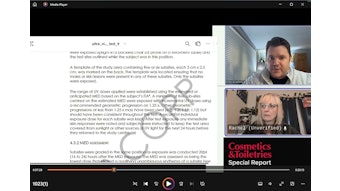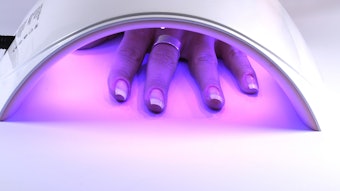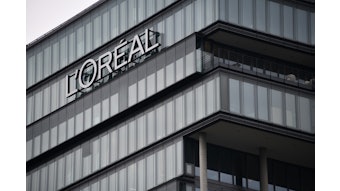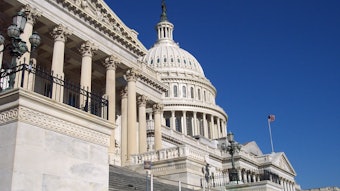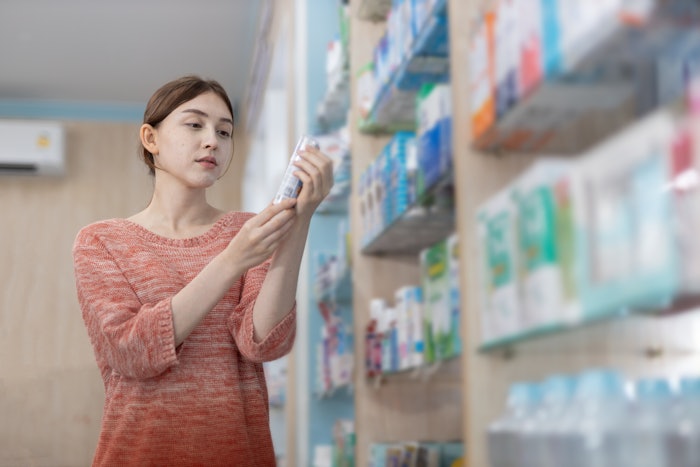
From January to June 2025, the Asia-Pacific region witnessed significant regulatory changes affecting cosmetic ingredients, labeling, safety assessments, testing methods and product notification. Following are brief updates. (Also see previous updates from Nov/Dec 2024 and July to Nov. 2024).
Chinese Mainland: Testing Method Updates
On Jan. 22, 2025, China’s National Institutes for Food and Drug Control (NIFDC) opened a month-long public consultation on nine draft testing methods.1 These drafts cover testing methods for ingredient determination in toothpaste, skin absorption, eye irritation, skin sensitization and immunotoxicity.
Subsequently, on May 7, the National Medical Products Administration (NMPA) announced amendments2 to the Safety and Technical Standards for Cosmetics (2015 Edition)3 (STSC), which will take effect on March 1, 2026. The update introduces five new testing methods — three of which originated from the January drafts — and revises two existing ones for cosmetic registration, notification and post-market sampling.
The new testing methods are:
- Determination of Hard Particles in Toothpaste,
- Determination of Diethylene Glycol and Glycol in Toothpaste,
- Determination of Soluble/Free Fluoride in Toothpastes,
- Determination of Total Fluoride in Toothpaste and
- In chemico Skin Sensitization: The ARE-Nrf2 Luciferase LuSens Test.
The revised testing methods are:
- Determination of Li and 42 Kinds of Elements in Cosmetics and
- Determination of Li and 42 Kinds of Elements in Toothpaste.
Chinese Mainland: Ingredient Usage Information
On February 9, the NIFDC issued a notice to update the Ingredient Usage Information of Marketed Products4 (the Updated Ingredient Information), replacing the previous version released on April 30, 2024.5 NIFDC also published an accompanying Q&A document for this update.6
The Updated Ingredient Information is an objective compilation of ingredients used in cosmetics that have been validly registered or notified in China. Its release marks further progress in the refinement of China's cosmetic ingredient regulatory framework, offering enhanced reference value for safety assessments, product innovation and compliance management.
Key updates include:
- Expanded scope: While the previous version focused mainly on ingredients used in special cosmetics not listed in the STSC, the new version extends coverage to both registered and notified products, including general cosmetics. The data set has grown significantly, now covering 3,608 ingredients and 7,672 usage records, compared to 2,234 ingredients and 4,415 entries in the April 2024 edition.
- Expanded usage information for eye-area products: The updated version increases the number for eye-area usage information, with 2,172 usage records retrieved using the keyword eye. This update helps address the data gaps in the safety evaluations of eye products.
- Inclusion of body hair and nail application areas: For the first time, the Updated Ingredient Information includes application areas for body hair and nails (fingers and toes), filling prior regulatory gaps. This addition provides a more precise reference for product development in niche segments such as hair and nail care.
Chinese Mainland: Expanded Safety Assessment Reference Data
On April 10, the NIFDC officially released7 the Information on the Use of Some Ingredients Included in the International Cosmetic Safety Assessment Data Index,8 along with a corresponding FAQ document.9
This publication provides detailed usage information for 999 cosmetic ingredients, comprising 2,879 entries that specify application sites, methods of use and usage amounts. The ingredients covered are selected from the 3,651 substances listed in the International Cosmetic Safety Assessment Data Index; specifically those that are without safety conclusions or subject to usage restrictions, yet are commonly used in cosmetics registered or notified in China.
Notably, this dataset — like NIFDC’s earlier release, Ingredient Usage Information of Marketed Products — is an objective compilation based on actual registered or notified products in China. While both documents follow consistent data referencing principles, the newly released dataset does not duplicate the data from the previous release. Instead, it complements and expands the reference resources available to enterprises conducting cosmetic safety assessments.
Chinese Mainland: Cosmetic Risk Monitoring
On Sept. 14, 2024, the NMPA released the draft Administrative Measures on Cosmetic Safety Risk Monitoring for public comment. The finalized version, titled Administrative Measures on Cosmetic Safety Risk Monitoring and Evaluation10 (“the Measures”), was issued on April 9 and took effect on August 1,11 replacing the 2018 Working Rules for Cosmetic Risk Monitoring.12
Consisting of 33 articles across six chapters, the Measures establish a more comprehensive framework for monitoring and evaluation of safety risks associated with cosmetics and toothpaste. The key highlights of the Measures include:
- Responsibility divisions and monitoring objectives: The goal of risk monitoring is to identify and prevent quality and safety risks, support the development of risk control measures, guide sampling inspections, etc.
- MPA: Manages national risk monitoring and evaluation, establishes a national monitoring system and sets the overall plan.
- Local MPAs: Conduct monitoring at administrative levels to identify risks.
- Key monitoring products and items: Risk monitoring and evaluation will prioritize commonly used substances with potential health risks, substances posing risks to vulnerable groups (e.g., children), hazardous substances introduced via raw materials, packaging materials or those generated during production, storage or transport, items linked to standards under development or revision, and other critical monitoring items.
- Risk monitoring process: The Measures detail the risk monitoring process, which includes sampling, inspection and testing, result reporting, investigation and handling, risk control and case filing.
- Application and evaluation of monitoring results: MPAs will implement tailored risk management actions based on specific situations, such as continuing risk monitoring, conducting targeted sampling or routine inspections, facilitating industry communication on safety risks, and initiating or revising relevant cosmetic standards.
Taiwan: Fragrance Labeling
On January 21, Taiwan’s Food and Drug Administration (TFDA) launched a public consultation that was open until March 24 on two draft regulations:
- Ingredients of Specific Fragrances or Flavorings That Should Be Labeled in Cosmetics (Draft)13
- Draft Amendments to the Labeling Requirements for Cosmetic Packaging, Containers, Labels or Directions14
To better protect consumers with fragrance sensitivities, Taiwan proposed mandatory labeling of the following 24 specified fragrance ingredients. These ingredients must be individually listed on product labels when present above 0.001% in leave-on and 0.01% in rinse-off products, rather than using the generic terms like fragrance or flavor:
Amyl Cinnamal, Benzyl Alcohol, Cinnamyl Alcohol, Citral/Geranial/Neral, Eugenol, Hydroxycitronellal, Isoeugenol, Amylcinnamyl Alcohol, Benzyl Salicylate, Cinnamal, Coumarin, Geraniol, Anise Alcohol, Benzyl Cinnamate, Farnesol, Linalool, Benzyl Benzoate, Citronellol, Hexyl Cinnamal, Limonene, Methyl 2-Octynoate, Alpha-Isomethyl Ionone, Evernia Prunastri Extract and Evernia Furfuracea Extract.
This labeling change will be incorporated into Article 7 of the Labeling Requirements for Cosmetic Packaging, Containers, Labels or Directions.15 A one-year transition period will apply after the final publication. Products manufactured or imported before the effective date can continue to be sold within their shelf life.
Taiwan: Proposed Ingredient Restrictions
On April 1, the TFDA released a draft revision16 of the List of Ingredients Restricted in Cosmetic Products, which was open for public comment until June 2. The updated list is expected to take effect on July 1, 2026.
The proposed revision aims to enhance consumer safety and align Taiwan’s cosmetic regulations more closely with international standards. Key updates include:
- Addition of 34 ingredients, such as 6-hydroxyindole, 2-amino-5-ethylphenol HCl, Acid Green 25 and dihydroxyacetone;
- Revisions to 74 existing ingredients, including kojic acid, β-arbutin, disperse Violet 1, and HC Red No. 7. These revisions primarily clarify applicable product types and precautionary statements, with most changes being textual adjustments; and
- Removal of one ingredient: boric acid (CAS No. 10043-35-3/11113-50-1).
Japan: Special Labeling Rules Revision
On March 10, Japan’s Ministry of Health, Labor and Welfare (MHLW) issued a notification revising the regulations on special labeling of specific ingredients in cosmetics.17 Special labeling refers to the prominent display of certain ingredient names in advertising or packaging, which is generally prohibited to avoid misleading consumers into believing a product has pharmaceutical properties. However, such labeling is allowed if the ingredient’s purpose falls within the 56 approved cosmetic efficacy claims, is clearly disclosed, and is presented in a non-misleading manner.
This revision replaces the previous rules in place since 1985 and introduces a more robust regulatory framework. Key updates include:
1. Evidence-Based Ingredient Claims
Claims about ingredient functions (e.g., moisturizing, brightening) must now be objectively substantiated based on the product’s formulation and efficacy. Acceptable evidence includes internal or external scientific data that is verifiable and reliable.
2. Visual Representation Standards
Visual representations (e.g., design elements, images and foreign-language text) emphasizing specific ingredients must clearly display both the ingredient name and its function to prevent unsubstantiated impressions.
3. Regulation of General Terms
Previously unregulated category-based expressions like plant extract or marine essence now fall under labeling scrutiny. When such terms are used, the specific ingredient and its function must be disclosed to prevent ambiguity. However, product-defining names (e.g., amino acid shampoo) are exempt.
4. Dual-Regulation for Quasi-Drug Ingredients
- For non-active ingredients in quasi-drugs, special labeling shall meet the same standards as for cosmetics: truthful, substantiated and non-misleading claims without implying drug-like effects.
- For active ingredients, claims implying medicinal effects (e.g., anti-inflammatory) are prohibited unless specifically approved.
South Korea: Ingredient Ban Lifting
Following the Feb. 6, 2024 amendment to the Cosmetics Act,18 South Korea allows companies to formally request the lifting or revision of bans on previously prohibited cosmetic ingredients. To guide industry compliance, the Ministry of Food and Drug Safety (MFDS) issued and implemented the Regulations on the Lifting or Modification of Bans on Cosmetic Ingredients and the Designation or Change of Cosmetic Ingredient Standards on March 26.19
Under the new regulations, prohibited ingredients refer to those listed in Appendix 1 of the Regulations on Cosmetic Safety Standards, etc. Companies seeking to lift or revise ingredient bans must submit a comprehensive application package that includes:
- A summary of all submitted materials;
- Data on the raw material’s origin, development, domestic and international usage standards, and usage status;
- Data on the raw material’s characteristics;
- Information on safety and efficacy data, including safety evaluation data (e.g., toxicity, irritation, sensitization and phototoxicity data), evaluation data on validity, and data for establishing usage criteria; and
- Test reports on the standards and testing methods of raw materials.
South Korea: Labeling Updates
In early 2025, South Korea rolled out several regulatory updates aimed at enhancing cosmetic labeling and consumer protection. On January 21, the MFDS revised the Guidelines of Cosmetic Labels and Advertisements,20 newly prohibiting the use of four types of expressions: claims involving recommendation or designation by medical professionals, references to human-derived ingredients, untrue or misleading usage instructions and statements implying age reversal.
On February 7, amendments to the Enforcement Rule of the Cosmetics Act took effect. Companies are now exempt from submitting certain documents — such as cosmetic manufacturing licenses or functional cosmetics evaluation notifications — if issued electronically. The revisions also introduced updated labeling requirements, applicable to cosmetics manufactured or imported after this date. These include clearer rules on manufacturing numbers, expiration dates, periods of use after opening and usage precautions.
Additionally, on April 1, the Cosmetics Act was amended to further strengthen regulation.21 Key changes include promoting the use of braille or voice/sign language conversion codes on labels, tightening oversight of overseas direct-purchase cosmetics, and designating September 7 as Cosmetics Day in South Korea.
Indonesia: Cosmetic Safety, Quality and Efficacy Assessment
On April 29, Indonesia’s Directorate of Standardization of Traditional Medicines, Health Supplements and Cosmetics (OTSKK) launched an 11-day public consultation on the draft amendment to the Regulation Concerning Service Standards for the Directorate. The finalized version was issued and took effect on June 18.22
The Service Standards outlines services provided by the directorate, including the assessment of safety, quality and efficacy for cosmetics, natural medicines, quasi-medicines and health supplements. Key changes impacting cosmetic companies in the amendment include the following.
- Application requirements: Cosmetic assessment applications must now be submitted directly by business operators intending to notify cosmetics — intermediaries are not allowed.
- Dossier clarification: Detailed supporting documents are now specified for the safety assessment of both plant-based and non-plant cosmetic ingredients.
- Fast-track option: A fast-track assessment process has been introduced, providing an alternative to the regular assessment process.
Indonesia: Test Parameters for Import Certificate Application
On June 3, Indonesia’s Directorate of Standardization of OTSKK released a draft regulation titled Regulation Concerning Cosmetic Test Parameters in Certificate of Analysis (CoA) for Import Certificate Application for public comment until June 10.23
The CoA is a key document required to obtain the SKI Border (import certificate). It must be issued by an accredited manufacturer or laboratory and include specific test parameters as mandated by Indonesia’s Food and Drug Supervisory Agency (BPOM).
Key provisions in the draft regulation are as follows.
- Mandatory test parameters: The draft outlines the mandatory cosmetic test parameters that must be included in the CoA. The required test parameters cover microbial and heavy metal contamination, applicable to 20 cosmetic product categories, including creams, emulsions, liquids, thick liquids, gels and oils for skin (face, hands, feet, etc.), facial masks (excluding chemical peeling products), foundations (thick liquid, paste, powder), bath products (salts, foams, oils, gels, etc.), depilatory products, self-tanning products, skin lightening products, etc.
- CoA validity and other requirements: The CoA for microbial and heavy metal testing will be valid for up to one year from the date of issuance. For imports of the same product with a different batch, the CoA must also include dosage form and organoleptic characteristics.
Thailand: Ingredient List Updates
On January 31, Thailand published a notification in the Royal Government Gazette, officially adding 56 new substances (entries 1613–1668) to the List of Prohibited Ingredients in Cosmetics.24 The addition took effect on February 1, with a 180-day grace period granted to businesses that had already manufactured, imported or sold products containing these ingredients prior to the effective date.
Later, on February 28, Thailand released nine draft announcements for a 14-day public consultation, proposing further revisions to the country’s cosmetic ingredient regulations.25 Key proposed changes include the following.
- Addition of 17 prohibited ingredients and 2 restricted ingredients: Newly proposed banned substances include 17 CMR ingredients, such as quinoline, imidazole and vinyl acetate. The restricted substances proposed are silver zinc zeolite and methyl-N-methylanthranilate.
- Modifications to four existing ingredient entries: These include revised prohibition scope for barium salts, updated specifications for restricted ingredient hydrogen peroxide, and revised usage conditions for permitted preservative sodium hydroxymethylglycinate and permitted UV filter octocrylene.
- Removal of two permitted preservatives: Chlorophene and chloroacetamide are proposed for deletion from the list of allowed preservatives.
Once finalized, most changes will become effective the day after publication in the Government Gazette, with some subject to a 180-day transition period.
Thailand: Labeling Requirements
On Aug. 5, 2024, the Thai Food and Drug Administration (Thai FDA) released a draft notification proposing updates to the warning labels for cosmetics containing climbazole as a preservative.26 The finalized notification was issued on January 31 and officially came into effect on February 1.
Key amendments include the following.
- Removal of age restriction: the phrase Do not use in children under 6 years of age has been removed.
- Modification of warning text: The warning has been updated from if irritation or abnormality occurs, stop using and consult a doctor or pharmacist, to if irritation occurs after using the product, stop using and consult a doctor or pharmacist.
- Eliminating the notes section: Climbazole is specified only for hair, eyebrow, mustache and beard products (excluding eyelashes and facial skin), making additional notes unnecessary.
Cosmetic businesses with products labeled under the previous requirements before February 1 are granted a 180-day transition period to update their labels in line with the new standards.
Thailand: Fluoride Toothpaste’s Labeling Requirements
On February 28, Thailand’s Cosmetics Committee released two draft announcements for a 14-day public consultation, proposing revisions to the labeling requirements for fluoride-containing cosmetics. The drafts aim to update existing warning statements for certain fluoride compounds and introduce mandatory labeling for fluoride toothpaste. Once finalized, the regulations will take effect the day after their publication in the Government Gazette.
On April 4, Thailand also notified the World Trade Organization (WTO) of the drafts, inviting comments from trading partners until June 3.
Highlights of the drafts are:
Revised warnings for specific fluoride compounds
The first draft27 updates warning statements for 20 fluoride compounds (e.g., ammonium monofluorophosphate, sodium fluoride, stannous fluoride, olaflur), which are allowed in toothpaste, mouthwash and other oral products with a maximum permitted concentration of 0.15%. The changes primarily affect the recommended usage instructions for children’s toothpaste labeling, with updated guidance as follows:
- For children under 3: use a rice grain-sized amount;
- For children aged 3 – 6: use a pea-sized or corn-sized amount; and
Children in both age groups should brush under adult supervision.
A one-year transition period will be granted for businesses with products that contain these ingredients and comply with current labeling rules to update product labels after the final regulation takes effect.
New Mandatory Labeling for Fluoride Toothpaste
The second draft28 requires toothpaste labels to include:
- The phrase fluoridated toothpaste (or equivalent statement) and
- Total fluoride content, expressed as fluoride ions (fluorine), with the unit specified in parts per million (ppm) or an equivalent notation.
These requirements supplement the 2019 labeling regulation. Existing notified products may continue using current labels for up to one year after the regulation takes effect.
Thailand: Microneedle-Based Cosmetics
On February 28, the Thai FDA released two draft announcements for a 14-day public consultation, proposing new regulations on microneedle-based cosmetics.29 Once finalized, both will take effect the day after publication in the Government Gazette.
Key highlights include:
Ban on most microneedle-based cosmetics
The first draft proposes a ban on the manufacture, import and sale of most microneedle-based cosmetics. Only dissolving microneedle patches with needle lengths ≤ 100 micrometers, intended for use on the face or body, will be allowed for cosmetic notification. All other forms, including those with microneedle-like crystalline structures, will be prohibited.
Mandatory labeling for dissolving microneedle patches
The second draft mandates warning labels for approved microneedle cosmetics. Key warnings include:
- This product may cause allergic reactions or irritation. Perform an allergy test before use;
- If any abnormalities occur after use, discontinue use and consult a physician or pharmacist;
- Do not use on thin skin, intimate areas, lips or abnormal skin conditions such as inflamed skin, acne, open wounds, irritated or abraded skin, etc;
- Avoid the eye area;
- Do not use on children under 15 years of age; and
- Not recommended for daily use.
Products with pre-existing labels must be updated within 180 days of the regulation’s effective date.
Conclusion
From evolving ingredient restrictions and safety testing protocols to refined labeling standards, the Asia-Pacific region continues to strengthen regulatory oversight of cosmetics in 2025. These developments reflect a broader regional shift toward enhanced consumer safety, international alignment and greater transparency.
Stakeholders across the cosmetics supply chain — including manufacturers, importers and brand owners — should closely monitor these changes to ensure timely compliance. As regulatory expectations grow more rigorous and harmonized, staying informed and proactive will be critical for maintaining market access and upholding consumer trust across Asia-Pacific markets.
References
1. China’s National Institutes for Food and Drug Control (NIFDC). (2025, Jan. 22). Notice of the NIFDC on Public Solicitation of Opinions on “Skin Absorption: In Vitro Method (Draft for Comments)” and Others. NIFDC. Available at: https://www.nifdc.org.cn/nifdc/xxgk/ggtzh/tongzhi/202501221347011412290.html
2. China’s National Medical Products Administration (NMPA). (2025, May 7). Announcement of the NMPA on Incorporating 7 Testing Methods into STSC (No. 18 of 2025). NMPA. Available at: https://www.nmpa.gov.cn/xxgk/ggtg/hzhpggtg/jmhzhptg/20250507161547128.html
3. ChemLinked. (2015, Dec. 23). Safety and Technical Standards for Cosmetics 2015. ChemLinked. Available at: https://cosmetic.chemlinked.com/database/view/168
4. ChemLinked. (2025, Feb. 9). Ingredient Usage Information of Marketed Products (2025 Edition). ChemLinked. Available at: https://cosmetic.chemlinked.com/database/view/1948
5. NIFDC. (2025, Feb. 9). Notice of the NIFDC on the Update of the "Ingredient Usage Information of Marketed Products". NIFDC. Available at: https://www.nifdc.org.cn/nifdc/bshff/hzhpbzh/hzhpbzhtzgg/202502071436561433633.html
6. NIFDC. (2025, Feb. 9). FAQs on the Ingredient Usage Information of Marketed Products (February 2025 Edition). NIFDC. Available at: https://www.nifdc.org.cn/nifdc/bshff/hzhpbzh/hzhpbzhtzgg/202502091416381436259.html
7. NIFDC. (2025, Apr. 10). Notice of the NIFDC on the Release of "Information on the Use of Some Ingredients Included in the International Cosmetics Safety Assessment Data Index". NIFDC. Available at: https://www.nifdc.org.cn/nifdc/bshff/hzhpbzh/hzhpbzhtzgg/202504100943531515755.html
8. ChemLinked. (2025, Apr. 10). Information on the Use of Some Ingredients Included in the International Cosmetic Safety Assessment Data Index. ChemLinked. Available at: https://cosmetic.chemlinked.com/database/view/2103
9. NIFDC. (2025, Apr. 10). FAQs on "Information on the Use of Some Ingredients Included in the International Cosmetics Safety Assessment Data Index". NIFDC. Available at: https://www.nifdc.org.cn/nifdc/bshff/hzhpbzh/hzhpbzhtzgg/202504100945161515758.html
10. ChemLinked. (2025, Apr. 9). Administrative Measures on Cosmetic Safety Risk Monitoring and Evaluation. ChemLinked. Available at: https://cosmetic.chemlinked.com/database/view/2102
11. NMPA. (2025, Apr. 9). NMPA’s Announcement on the Release of the “Administrative Measures on Cosmetic Safety Risk Monitoring and Evaluation” (No. 37 of 2025). NMPA. Available at: https://www.nmpa.gov.cn/xxgk/fgwj/xzhgfxwj/20250409165401197.html
12. ChemLinked. (2018, Jan. 9). Working Rules for Cosmetic Risk Monitoring. ChemLinked. Available at: https://cosmetic.chemlinked.com/database/view/1869
13. Taiwan’s Food and Drug Administration (TFDA). (2025, Jan. 21). Taiwan Releases the Draft of Ingredients of Specific Fragrances or Flavorings That Should Be Labeled in Cosmetics. TFDA. Available at: https://gazette.nat.gov.tw/egFront/detail.do?metaid=154952&log=detailLog
14. TFDA. (2025, Jan. 21). Taiwan Issues Draft Amendments to Labeling Requirements for Cosmetic Packaging, Containers, Labels or Directions. TFDA. Available at: https://gazette.nat.gov.tw/egFront/detail.do?metaid=154953&log=detailLog
15. ChemLinked. (2019, May 30). Labeling Requirements for Cosmetic Packaging, Containers, Labels or Directions. ChemLinked. Available at: https://cosmetic.chemlinked.com/database/view/485
16. TFDA. (2025, Apr. 1). TFDA’s Notice on Revising the List of Ingredients Restricted in Cosmetic Products. TFDA. Available at: https://gazette.nat.gov.tw/egFront/detail.do?metaid=156329&log=detailLog
17. Japan’s Ministry of Health, Labour and Welfare (MHLW). (2025, Mar. 10). Notification on the Special Labeling of Specific Ingredients in Cosmetics. MHLW. Available at: https://www.pref.ishikawa.lg.jp/yakuji/topic/documents/20250310_1.pdf
18. ChemLinked. (2024, Feb. 6). Cosmetics Act (Feb. 6, 2024). ChemLinked. Available at: https://cosmetic.chemlinked.com/database/view/2065
19. South Korea's Ministry of Food and Drug Safety (MFDS). (2025, Mar. 26). Partial Revision Notice of the “Regulations on the Lifting or Modification of Bans on Cosmetic Ingredients and the Designation or Change of Cosmetic Ingredient Standards” (Notice No. 2025-17, March 26, 2025). MFDS. Available at: https://www.mfds.go.kr/brd/m_207/view.do?seq=15058&srchFr=&srchTo=&srchWord=&srchTp=&itm_seq_1=0&itm_seq_2=0&multi_itm_seq=0&company_cd=&company_nm=&page=1
20. MFDS. (2025, Jan. 25). Guidelines of Cosmetic Labels and Advertisements. MFDS. Available at: https://www.mfds.go.kr/brd/m_99/view.do?seq=48816&srchFr=&srchTo=&srchWord=&srchTp=&itm_seq_1=0&itm_seq_2=0&multi_itm_seq=0&company_cd=&company_nm=&Data_stts=A&page=1
21. South Korean National Assembly. (2025, Apr. 1). Amendments to the Cosmetics Act. South Korean National Assembly. Available at: https://www.law.go.kr/LSW/lsInfoP.do?lsiSeq=270323&lsId=&efYd=20250401&chrClsCd=010202&urlMode=lsEfInfoR&viewCls=lsRvsDocInfoR&ancYnChk=0#
22. Indonesia’s Directorate of Standardization of Traditional Medicines, Health Supplements, and Cosmetics (OTSKK). (2025, Jun. 18). Announcement on the Finalized Amended Regulation Concerning Service Standards of the Directorate of Standardization of Traditional Medicine, Health Supplements, and Cosmetics. Indonesia’s Directorate of Standardization of OTSKK. Available at: https://standar-otskk.pom.go.id/publikasi/standar-pelayanan-publik-2025
23. Indonesia’s Directorate of Standardization of OTSKK. (2025, Jun. 3). Draft Regulation Concerning Cosmetic Test Parameters in Certificate of Analysis (CoA) for Import Certificate Application. Indonesia’s Directorate of Standardization of OTSKK. Available at: https://standar-otskk.pom.go.id/storage/uploads/248a2676-9a43-428c-a9a2-1b34b6a7e3e7/SK-BPOM-Juknis-Parameter-Uji-Kosmetik-dalam-rangka-SKI.pdf
24. Thai Food and Drug Administration (Thai FDA). (2025, Jan. 31). Announcement of the Ministry of Public Health on the Names of Substances Prohibited for Use as Ingredients in the Production of Cosmetics (No. 4) 2025. Thai FDA. Available at: https://cosmetic.fda.moph.go.th/media.php?id=727342573680730112&name=%E0%B8%9B%E0%B8%A3%E0%B8%B0%E0%B8%81%E0%B8%B2%E0%B8%A8%20%E0%B8%AA%E0%B8%98.%20%E0%B8%AB%E0%B9%89%E0%B8%B2%E0%B8%A1%E0%B9%83%E0%B8%8A%E0%B9%89%20(%E0%B8%89%E0%B8%9A%E0%B8%B1%E0%B8%9A%E0%B8%97%E0%B8%B5%E0%B9%88%204).pdf
25. Thai FDA. (2025, Feb. 28). Public Consultation on Nine Draft Subordinate Regulations for Cosmetics. Thai FDA. Available at: https://www.law.go.th/listeningDetail?survey_id=NDk5OERHQV9MQVdfRlJPTlRFTkQ=
26. Thai FDA. (2025, Jan. 31). Announcement of the Cosmetics Committee on the Display of Warnings on the Labels of Cosmetics Containing Preservatives (No. 5) 2024. Thai FDA. Available at: https://cosmetic.fda.moph.go.th/media.php?id=727342507679162368&name=%E0%B8%9B%E0%B8%A3%E0%B8%B0%E0%B8%81%E0%B8%B2%E0%B8%A8%20%E0%B8%84%E0%B8%81%E0%B8%81.%20%E0%B8%84%E0%B8%B3%E0%B9%80%E0%B8%95%E0%B8%B7%E0%B8%AD%E0%B8%99%E0%B8%A7%E0%B8%B1%E0%B8%95%E0%B8%96%E0%B8%B8%E0%B8%81%E0%B8%B1%E0%B8%99%E0%B9%80%E0%B8%AA%E0%B8%B5%E0%B8%A2%20(%E0%B8%89%E0%B8%9A%E0%B8%B1%E0%B8%9A%E0%B8%97%E0%B8%B5%E0%B9%88%205).pdf
27. Thai FDA. (2025, Feb. 28). Draft of the Cosmetics Committee's Announcement on the Display of Warnings on the Labels of Cosmetics Containing Ingredients Used in Cosmetic Production (No. ..) B.E.. Thai FDA. Available at: https://files.law.go.th/dgaBackoffice/2025-02-26-16%3A39%3A43_%5Bhearing%5D%20%E0%B8%84%E0%B8%B3%E0%B9%80%E0%B8%95%E0%B8%B7%E0%B8%AD%E0%B8%99%20F.pdf
28. Thai FDA. (2025, Feb. 28). Draft of the Cosmetics Committee’s Announcement on the Labeling of Toothpaste Containing Fluoride B.E. ..... Thai FDA. Available at:
https://files.law.go.th/dgaBackoffice/2025-02-26-16%3A39%3A43_%5Bhearing%5D%20%E0%B8%89%E0%B8%A5%E0%B8%B2%E0%B8%81%20F.pdf
29. Thai FDA. (2025, Feb. 28). Public Consultation on the Draft Announcements on the Characteristics and Display of Warnings on the Labels of Cosmetics in the Form of Small Needles or Microneedles. Thai FDA. Available at: https://law.go.th/listeningDetail?survey_id=NTAxNkRHQV9MQVdfRlJPTlRFTkQ=


